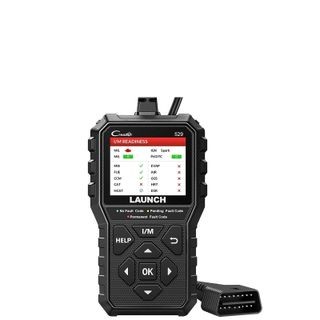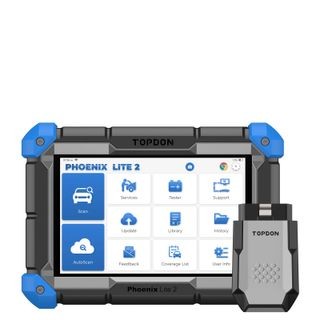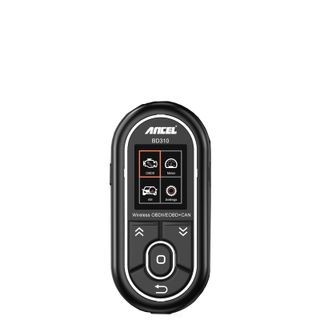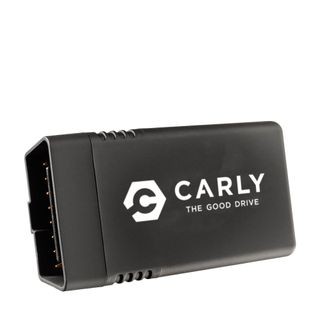The modern car is a complex machine, but thankfully, understanding its inner workings has become significantly easier thanks to Obd-ii Scanners. These ingenious devices act as a bridge to your car’s onboard computer, providing you with a wealth of diagnostic information. Whether you’re facing a mysterious dashboard light or suspect a more serious issue, an OBD-II scanner empowers you to take control of your car’s health, often saving you time and money on professional mechanic fees.
However, the world of OBD-II scanners can be overwhelming, especially for beginners. With a vast array of options available, ranging from basic code readers to advanced professional-grade tools, choosing the right scanner can feel like navigating a maze. That’s where our expertise comes in. At obd-de.com, we’ve rigorously tested a wide spectrum of OBD-II scanners, and we’re here to guide you to the best choices on the market.
From user-friendly wireless options like the Topdon TopScan, ideal for on-the-go diagnostics, to budget-friendly yet powerful tools like the Launch CR529, and the professional-grade capabilities of the Topdon Phoenix Lite 2, we’ve handpicked scanners to suit every need and budget. Dive in to discover our top recommendations and gain a deeper understanding of how OBD-II scanners function and what those cryptic error codes actually mean.
Here are our expert picks for the best OBD-II scanners available right now, designed to help you diagnose car problems efficiently and effectively.
Top OBD-II Scanner Picks at a Glance
Based on our extensive hands-on testing, here’s a quick rundown of the best OBD-II scanners you can buy today. Keep scrolling for detailed reviews and insights into each product.
| Scanner | Best For | Standout Feature |
|---|---|---|
| Topdon TopScan | Mobile Diagnostics | Wireless, Feature-Rich App |
| Launch CR529 | Budget-Conscious Users | Affordable, Lifetime Updates |
| Topdon Phoenix Lite 2 | Professional & Advanced Amateurs | Pro-Level Diagnostics, Rugged Design |
| Ancel BD310 | Dual-Purpose Use | Scanner & Car Display Combo |
| Carly OBD-II Scanner | App Integration & Customization | Comprehensive Companion App |






In-Depth Reviews: The Best OBD-II Scanners of 2024
Let’s delve deeper into each of our top OBD-II scanner recommendations, exploring their key features, benefits, and why they stand out in a crowded market.
1. Topdon TopScan: Best Mobile OBD-II Scanner
[Topdon TopScan mobile OBD-II scanner for wireless car diagnostics]
The Topdon TopScan redefines mobile car diagnostics. Don’t let its compact size fool you; this Bluetooth OBD-II scanner is packed with features typically found in more expensive, professional-grade tools. Its seamless wireless connectivity and intuitive mobile app make diagnosing car problems easier than ever.
Key Features and Benefits:
- Effortless Bluetooth Connectivity: Setting up the Topdon TopScan is a breeze. Simply plug it into your OBD-II port, pair it with your smartphone via Bluetooth, and you’re ready to start diagnosing.
- Comprehensive Diagnostics: Beyond basic error code reading, the TopScan offers in-depth diagnostic capabilities, including repair instructions, parts lists, and even predictive features to anticipate potential future issues.
- Performance and Efficiency Checks: Unlike many basic OBD-II scanners, the TopScan goes further by assessing your car’s performance and efficiency. It can even estimate horsepower and torque figures, valuable for both performance enthusiasts and those focused on maintaining optimal vehicle health.
- Extensive Vehicle Coverage: The Topdon TopScan boasts broad vehicle compatibility, supporting a wide range of car makes and models.
Pros:
- Excellent diagnostic coverage for various car systems.
- Provides live data for real-time monitoring of vehicle parameters.
- Offers unique performance indicators for vehicle assessment.
- Covers essential maintenance items, aiding in preventative care.
Cons:
- The Bluetooth transmitter is somewhat bulky.
- Some advanced features require a subscription after the first year of use.
The Topdon TopScan is an exceptional choice for users who value portability, ease of use, and a rich feature set in a mobile OBD-II scanner. Whether you’re a seasoned car enthusiast or a everyday driver seeking to understand your vehicle better, the TopScan delivers impressive diagnostic power in a compact package.
2. Launch CR529: Best Budget OBD-II Scanner
[Launch CR529 OBD-II scanner for affordable car diagnostics]
For car owners seeking a reliable OBD-II scanner without breaking the bank, the Launch CR529 is a standout option. Priced affordably, this handheld scanner delivers a surprising array of features and capabilities, making it an excellent value proposition.
Key Features and Benefits:
- Unbeatable Price Point: The Launch CR529 is one of the most affordable full-featured OBD-II scanners on the market, making it accessible to budget-conscious users.
- Comprehensive OBD-II Functionality: Despite its low price, the CR529 covers all essential OBD-II functions, including reading and clearing trouble codes, viewing live data streams, and performing I/M readiness tests.
- Lifetime Free Updates: A significant advantage of the Launch CR529 is its lifetime free software updates. This ensures your scanner remains compatible with newer vehicles and diagnostic protocols, extending its lifespan and value.
- User-Friendly Interface: The CR529 features a clear color display and intuitive button controls, making it easy to navigate and operate, even for first-time OBD-II scanner users.
Pros:
- Extremely affordable OBD-II scanner.
- Offers lifetime free updates, a rare feature at this price point.
- Provides an easy pre-inspection report for emissions checks.
Cons:
- Lacks manufacturer-specific diagnostic codes, limiting advanced diagnostics on some vehicles.
- Feels somewhat heavy for its size.
- Comes with a 1-year warranty, shorter than some competitors.
The Launch CR529 is an ideal OBD-II scanner for car owners who need essential diagnostic capabilities at an affordable price. It’s perfect for DIYers, those wanting to diagnose basic check engine light issues, and anyone seeking a reliable, budget-friendly scan tool.
3. Topdon Phoenix Lite 2: Best Professional-Level OBD-II Scanner
[Topdon Phoenix Lite 2 professional OBD-II scanner for advanced diagnostics]
The Topdon Phoenix Lite 2 bridges the gap between amateur and professional car diagnostics. This robust and feature-rich OBD-II scanner offers advanced capabilities typically found in professional workshop tools, making it a powerful choice for serious DIYers and professional mechanics alike.
Key Features and Benefits:
- Professional-Grade Diagnostics: The Phoenix Lite 2 delivers near-professional level diagnostic functions, including advanced system scans, bi-directional control, and special functions like oil reset, EPB reset, and more.
- Wireless and Handheld Versatility: This scanner combines the flexibility of wireless Bluetooth connectivity with a rugged handheld tablet interface. The 8-inch touchscreen display provides ample screen real estate for viewing data and navigating menus.
- Extensive Vehicle Coverage and Adaptability: The Phoenix Lite 2 boasts broad vehicle coverage and comes with adapters for older vehicles, ensuring compatibility with a wide range of makes and models.
- Comprehensive Data and Reporting: The scanner displays live data in graphs and numerical formats, provides detailed fault code information, and allows for report generation and sharing.
Pros:
- Offers near-professional OBD-II scanning capabilities.
- Combines handheld operation with Wi-Fi and Bluetooth connectivity.
- Features a large and user-friendly 8-inch touchscreen.
- Provides an excellent array of diagnostic tests and live data options.
- Includes adapters for older vehicles and a hard case for protection.
Cons:
- Larger and heavier than basic scanners, potentially cumbersome for some users.
- Higher price point reflects its professional-grade features.
- Firmware updates require a subscription after two years.
The Topdon Phoenix Lite 2 is a premium OBD-II scanner designed for users who demand advanced diagnostic capabilities. Its professional features, rugged build, and versatile operation make it an excellent investment for experienced DIY mechanics and automotive professionals seeking a powerful and reliable scan tool.
4. Ancel BD310: Best Dual-Purpose OBD-II Scanner
[Ancel BD310 dual-purpose OBD-II scanner and car display]
The Ancel BD310 offers a unique dual-purpose functionality, serving as both a standard OBD-II scanner and a secondary car display. This innovative design makes it a versatile tool for everyday car monitoring and diagnostics.
Key Features and Benefits:
- Dual Functionality: The BD310 can operate as a handheld OBD-II scanner or connect to your smartphone via Bluetooth to function as an auxiliary display, showing real-time engine data on your dashboard.
- Compact and Portable: Its small and lightweight design makes the BD310 easy to store in your glovebox or carry with you for on-the-go diagnostics.
- Bluetooth Connectivity: Wireless Bluetooth connectivity allows for seamless integration with smartphones for enhanced data viewing and app-based features.
- Essential OBD-II Functions: The BD310 covers all basic OBD-II functions, including reading and clearing codes, viewing live data, and performing I/M readiness checks.
Pros:
- Lightweight and compact design for easy portability.
- Functions as both an OBD-II scanner and a secondary car display.
- Offers both handheld and Bluetooth scanning capabilities.
Cons:
- Minimalist interface may lack advanced features for some users.
- Small 2-inch screen can be limiting for detailed data viewing.
The Ancel BD310 is a practical and innovative OBD-II scanner for drivers who want basic diagnostic capabilities combined with the convenience of a secondary car display. Its dual-purpose design and compact size make it a useful tool for everyday car monitoring and troubleshooting.
5. Carly OBD-II Scanner: Best Scanner with a Companion App
[Carly OBD-II scanner with comprehensive companion app]
The Carly OBD-II Scanner distinguishes itself with its exceptional companion app. While the scanner itself is a capable Bluetooth OBD-II device, it’s the Carly app that truly elevates the user experience, offering a wealth of customization options and advanced features.
Key Features and Benefits:
- Exceptional Companion App: The Carly app is one of the most comprehensive and user-friendly OBD-II scanner apps available. It provides in-depth diagnostics, customization options, maintenance features, and more.
- Vehicle Customization: For supported car brands like VW, BMW, and Ford, the Carly app unlocks customization options, allowing you to personalize vehicle settings and features.
- Advanced Diagnostics and Repair Help: Beyond basic code reading, the Carly app offers repair guides, maintenance tracking, and even used car checks to help you assess vehicle health and potential issues.
- Lifetime Warranty and Updates: Carly provides a lifetime warranty on their scanner and ongoing app updates, ensuring long-term value and support.
Pros:
- User-friendly and feature-rich companion app.
- Offers customization options for select car brands.
- Provides live data display and comprehensive diagnostics.
- Includes maintenance and repair information within the app.
- Lifetime warranty and updates for the scanner.
Cons:
- Feature availability varies depending on car make and model.
- Full app functionality requires a subscription, which can add to the overall cost.
The Carly OBD-II Scanner is a top choice for users who prioritize a seamless app experience and advanced features, particularly those with compatible car brands who can leverage the app’s customization and brand-specific functionalities.
Other OBD-II Scanners We’ve Tested
While the above scanners represent our top picks, we’ve tested numerous other OBD-II scanners that are also worth considering:
-
Innova CarScan Mobile 1000 (★★★★☆): A highly innovative Bluetooth OBD-II scanner known for its predictive diagnostics and user-friendly setup.
[ThinkCar ThinkDiag TKD01 OBD-II scanner for advanced fault code reading]
-
ThinkCar ThinkDiag TKD01 (★★★★☆): A robust Bluetooth OBD-II scanner offering extensive manufacturer-specific error codes and advanced fault code resolution.
-
Autel AutoLink AL539 (★★★☆☆): An OBD-II scanner specifically designed for electrical diagnostics, featuring a built-in multimeter and comprehensive live data.
Frequently Asked Questions About OBD-II Scanners
Understanding OBD-II scanners and their functionality can empower you to take better care of your vehicle. Here are answers to some frequently asked questions:
What exactly is an OBD-II Scanner?
An OBD-II scanner is a diagnostic tool that connects to your car’s onboard computer system via the OBD-II port. It allows you to access and interpret data related to your vehicle’s engine, emissions, and other systems. Mechanics use these scanners to diagnose issues quickly and accurately, and now car owners can leverage this technology too. OBD-II scanners range from basic code readers that identify error codes to advanced models that offer real-time system monitoring and predictive diagnostics.
What is the OBD-II Port and Where Can I Find It?
The On-Board Diagnostics Version Two (OBD-II) port is a standardized connector found in virtually all passenger vehicles sold in the United States since 1996, and in other regions like Canada, Europe, Australia, and Mexico in subsequent years. This port serves as the interface point for accessing your car’s computer. It’s typically located within a few feet of the steering wheel, often under the dashboard on the driver’s side. If you’re unsure of its exact location, consult your car’s owner’s manual or search online for “[your car make and model] OBD-II port location”.
What is a DTC and Why is it Important?
DTC stands for Diagnostic Trouble Code. When your car’s onboard computer detects a problem, it generates a DTC, which is essentially an error code that signals a specific issue. OBD-II scanners read these DTCs, allowing you to understand what’s going wrong with your vehicle. These codes are standardized to a large extent, meaning similar codes often indicate similar problems across different car brands.
Decoding DTCs: What Do They Actually Mean?
DTCs may seem like a jumble of letters and numbers, but they follow a logical structure. The first character indicates the affected system:
- P – Powertrain (engine, transmission)
- B – Body (interior, airbags, etc.)
- C – Chassis (brakes, suspension, steering)
- U – Network & Vehicle Integration
The second character is a number indicating code type: 0 for generic (standardized across manufacturers) and 1 for manufacturer-specific. The third character specifies the subsystem involved (e.g., fuel/air metering, ignition, emissions). The last two characters pinpoint the specific fault within that subsystem. While basic OBD-II scanners provide a general description of the DTC, more advanced scanners offer more detailed explanations and potential repair steps. Online resources and DTC code databases can also help you decipher these codes further. It’s important to remember that not all DTCs indicate critical problems; some may be triggered by minor issues or sensor fluctuations.
How to Choose the Best OBD-II Scanner for Your Needs
Selecting the right OBD-II scanner depends on your individual needs and technical expertise. Here are key factors to consider when making your choice:
Handheld vs. Wireless Scanners:
- Handheld OBD-II scanners are self-contained units with a built-in screen and cable. They are generally easy to use and don’t require a smartphone or tablet.
- Wireless OBD-II scanners connect to your smartphone or tablet via Bluetooth. They often offer more advanced features through companion apps and can be more portable.
Essential Features to Look For:
- Ease of Setup: A user-friendly scanner should be quick and easy to set up and connect to your vehicle.
- Fault Code Reading and Explanation: The scanner should accurately read DTCs and provide clear explanations of their meaning.
- I/M Readiness Check: This feature verifies if your car’s emissions systems are ready for inspection, helping you avoid failed emissions tests.
- Live Data Streaming: The ability to view real-time data from your car’s sensors (e.g., engine speed, temperature) is invaluable for diagnosing intermittent problems.
- Data Graphing: Visual representations of live data, like graphs, can make it easier to identify trends and anomalies.
- Warranty and Updates: Consider scanners with a good warranty and software updates to ensure long-term reliability and compatibility with newer vehicles.
Additional Features to Consider:
- Screen Size and Clarity (for handheld scanners): A large, bright, and easy-to-read display enhances usability.
- Ruggedness: If you work in demanding environments, a rugged scanner with shock protection is beneficial.
- Manufacturer-Specific Codes: Advanced scanners that read manufacturer-specific codes provide more in-depth diagnostics for certain car brands.
- Special Functions: Some scanners offer advanced functions like ABS/SRS diagnostics, bi-directional control, or reset functions (oil reset, EPB reset).
Price vs. Functionality:
OBD-II scanners are available at a wide range of price points. Basic code readers can be very affordable, while professional-grade scanners with advanced features can cost significantly more. Determine your budget and the level of functionality you require before making a purchase. For most car owners, a mid-range scanner offering essential OBD-II functions and some advanced features will strike a good balance between price and capability.
How We Test OBD-II Scanners: Our Methodology
At obd-de.com, we conduct rigorous hands-on testing to evaluate OBD-II scanners and provide you with reliable recommendations. Our testing process involves the following steps:
- Vehicle Compatibility Verification: We ensure each scanner can correctly identify the test vehicle’s VIN (Vehicle Identification Number) and establish a stable connection.
- Connectivity Testing: For wireless scanners, we assess Bluetooth or Wi-Fi connection stability and range using various devices (smartphones, tablets). For handheld scanners, we evaluate cable length and ease of connection.
- Diagnostic Functionality Assessment: We test the scanner’s ability to read and clear diagnostic trouble codes (DTCs), view live data streams, and perform I/M readiness checks. We also evaluate the clarity and accuracy of fault code descriptions and explanations.
- Live Data Monitoring: We monitor engine and system parameters in real-time while the vehicle is running, assessing the scanner’s ability to display data in numerical, graphical, and gauge formats.
- Simulated Fault Testing: To verify diagnostic accuracy, we simulate a fault condition (e.g., disconnecting an engine sensor) and evaluate the scanner’s ability to detect and report the issue correctly. We then use the scanner to clear the fault code and verify the repair.
- User Experience Evaluation: We assess the scanner’s ease of use, interface intuitiveness, menu navigation, and overall user-friendliness. We also consider the quality of companion apps for wireless scanners.
Through this comprehensive testing process, we strive to provide you with accurate and insightful reviews to help you choose the best OBD-II scanner for your specific needs and vehicle.
Take Control of Your Car’s Health with the Right OBD-II Scanner
Investing in a quality OBD-II scanner is a smart move for any car owner. It empowers you to understand your vehicle better, diagnose problems early, and potentially save money on unnecessary mechanic visits. Whether you choose a basic handheld code reader or a feature-rich professional-grade tool, an OBD-II scanner is an invaluable addition to your car maintenance toolkit. Explore our top picks and find the perfect OBD-II scanner to unlock your car’s secrets and keep it running smoothly for years to come.